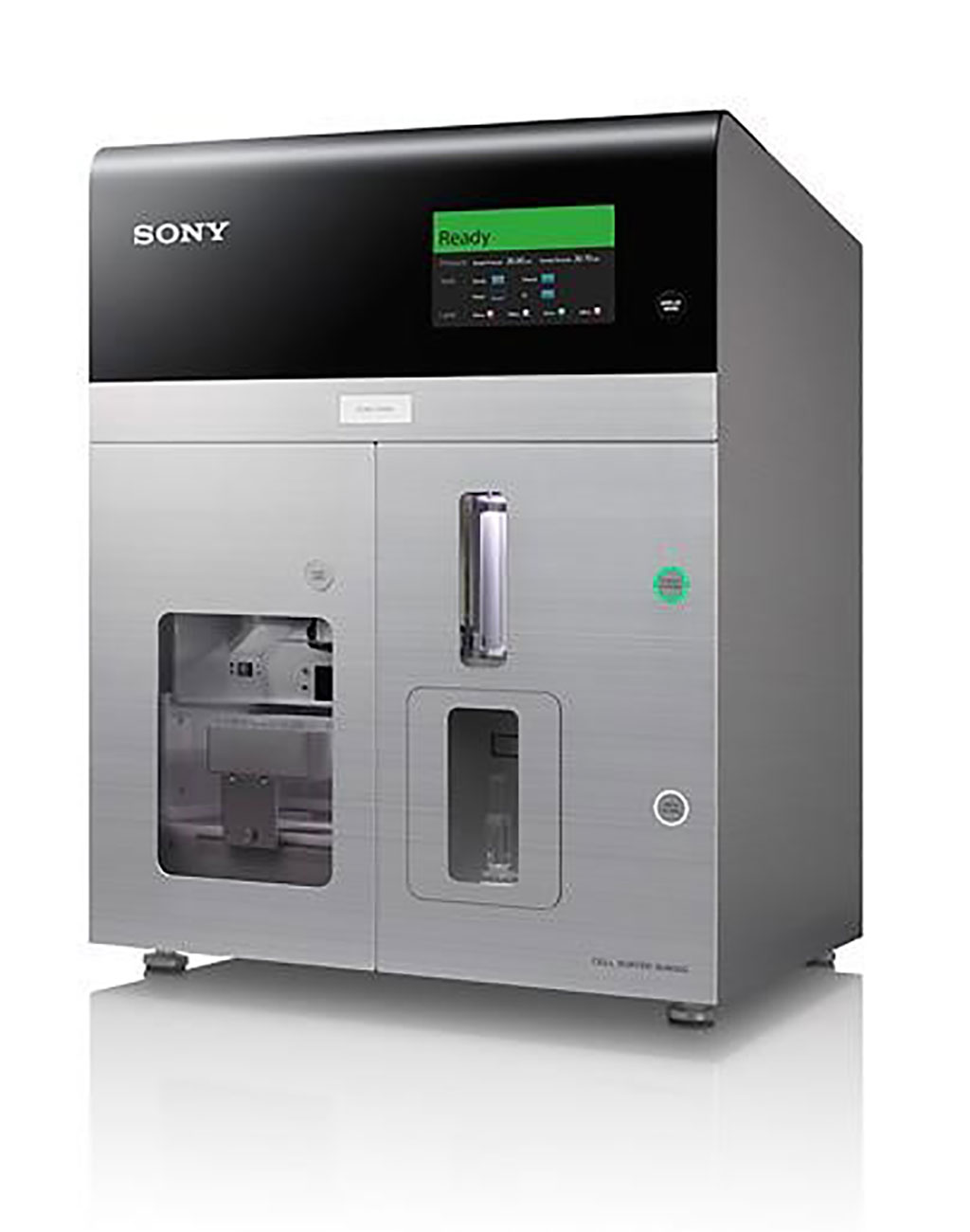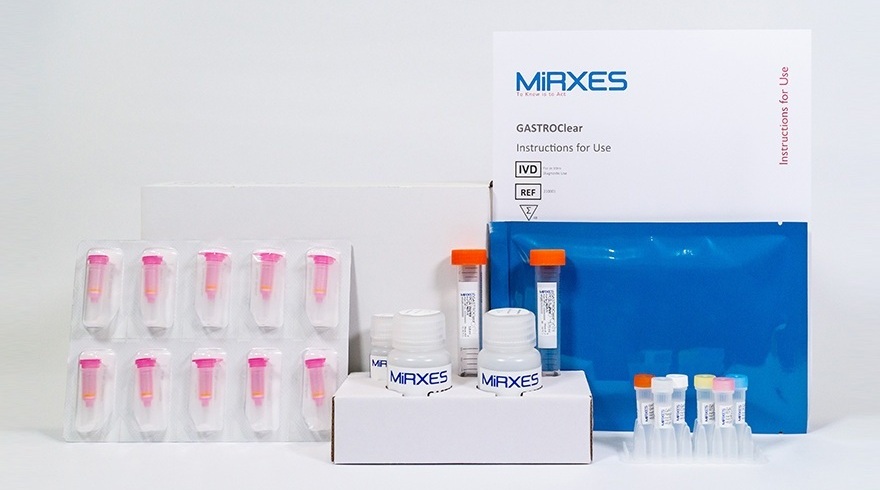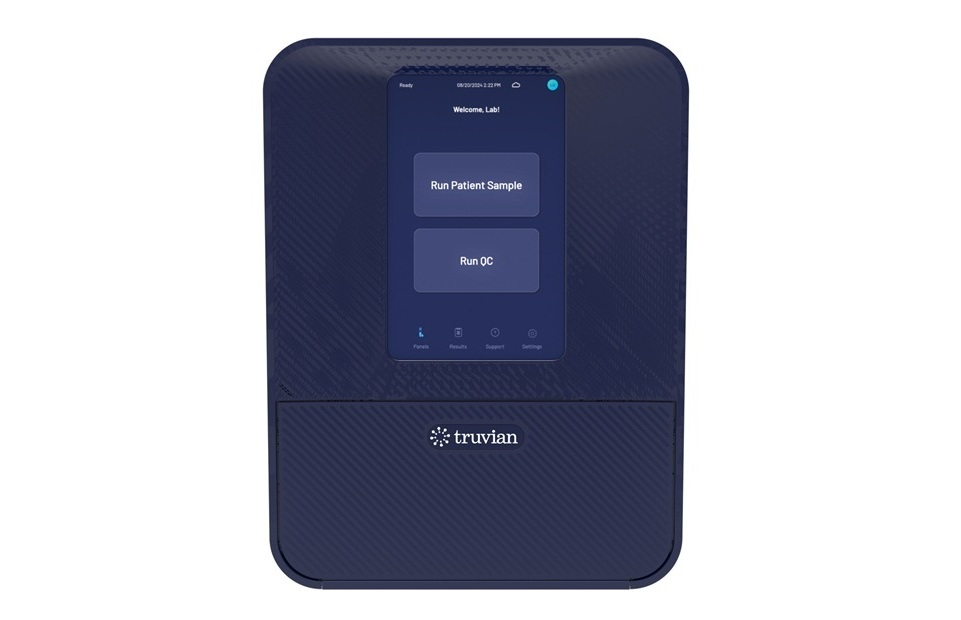Pediatric Ependymoma Single-Cell Analysis Signatures Linked to Outcomes
|
By LabMedica International staff writers Posted on 30 Jul 2020 |

Image: The benchtop SH800S cell sorter permits sorting of a wide range of cell sizes for many applications using the 70-μm, 100-μm, and 130-μm microfluidic sorting chips (Photo courtesy of Sony Biotechnology).
An ependymoma is a tumor that arises from the ependyma, a tissue of the central nervous system. Usually, in pediatric cases the location is intracranial, while in adults it is spinal. The common location of intracranial ependymomas is the fourth ventricle.
Ependymomas make up about 5% of adult intracranial gliomas and up to 10% of childhood tumors of the central nervous system (CNS). Their occurrence seems to peak at age 5 years and then again at age 35. They develop from cells that line both the hollow cavities of the brain and the canal containing the spinal cord.
A team of Pediatric Oncologists based at the Dana-Farber Cancer Center (Boston, MA, USA) and their colleagues generated single-cell transcriptomic data on 20 fresh surgical tumor samples from 18 patients, as well as on eight patient-derived cell models and two patient-derived xenografts. At the same time, they performed single-nucleus RNA-seq on 14 snap-frozen ependymoma samples. In all, they analyzed 74,927 single tumor cells or nuclei, and, based on the samples' DNA methylation patterns, determined the tumors' molecular subgroups.
Tumor tissue was dissociated mechanically followed by papain-based enzymatic digestion for 30 min at 37°C using a Brain Tumor Dissociation Kit (Miltenyi Biotec, Bergisch Gladbach, Germany). Single-cell sorting was performed on a SH700 cell sorter (Sony Biotechnology, San Jose, CA, USA) using 488 nm (calcein AM, 530/30 emission filter) and 633 nm (TO-PRO3, 665/30 emission filter) lasers. Whole transcriptome amplification, library preparation, and sequencing of single cells and single nuclei were performed following the Smart-seq2 modified protocol. Single nuclei were processed using the microfluidics-based 10X Chromium Single Cell 3’ Reagent Kits v3 (10X Genomics, Pleasanton, CA, USA).
The investigators reported that the transcriptomes of cells found within ependymomas, were similar to those of normal brain cells. However, they noted that the tumor cells appeared to have stopped at various points along the differentiation process. Within ependymomas, they uncovered three differentiation trajectories: ependymal-like, glial progenitor-like and neuronal-like cells. In posterior fossa ependymoma samples — posterior fossa group A (PF-A ) is the most aggressive of the subgroups and posterior fossa group B (PF-B) is linked to better patient prognosis — they uncovered nine recurrent transcriptional metaprograms. Two programs were linked with cell-cycle genes and were particularly found among PF-A samples. Other metaprograms were associated with mature cell types, astrocytes, or immature stem-like cells and neuronal or glial lineage precursors.
The team identified 10 transcriptional metaprograms, including two associated with cell-cycle genes and others linked to radial glial-like or neuronal precursor-like cell types, among eight supratentorial ependymoma samples. Undifferentiated cell states were also more common among tumors with poorer prognosis, such as the typically more aggressive PF-A tumors, the researchers found. The more benign groups like PF-B or PF-subependymoma had less proliferative and more differentiated cell populations. Within bulk RNA expression data, tumors' transcriptional signatures correlated with survival.
The authors concluded that this deconvolution of heterogeneous (ependymoma) subpopulations pinpoints key malignant transcriptomic signatures, and identify high-risk tumors and subsequently inform the development of more effective anti-ependymoma treatments. The study was published on July 13, 2020 in the journal Cancer Cell.
Ependymomas make up about 5% of adult intracranial gliomas and up to 10% of childhood tumors of the central nervous system (CNS). Their occurrence seems to peak at age 5 years and then again at age 35. They develop from cells that line both the hollow cavities of the brain and the canal containing the spinal cord.
A team of Pediatric Oncologists based at the Dana-Farber Cancer Center (Boston, MA, USA) and their colleagues generated single-cell transcriptomic data on 20 fresh surgical tumor samples from 18 patients, as well as on eight patient-derived cell models and two patient-derived xenografts. At the same time, they performed single-nucleus RNA-seq on 14 snap-frozen ependymoma samples. In all, they analyzed 74,927 single tumor cells or nuclei, and, based on the samples' DNA methylation patterns, determined the tumors' molecular subgroups.
Tumor tissue was dissociated mechanically followed by papain-based enzymatic digestion for 30 min at 37°C using a Brain Tumor Dissociation Kit (Miltenyi Biotec, Bergisch Gladbach, Germany). Single-cell sorting was performed on a SH700 cell sorter (Sony Biotechnology, San Jose, CA, USA) using 488 nm (calcein AM, 530/30 emission filter) and 633 nm (TO-PRO3, 665/30 emission filter) lasers. Whole transcriptome amplification, library preparation, and sequencing of single cells and single nuclei were performed following the Smart-seq2 modified protocol. Single nuclei were processed using the microfluidics-based 10X Chromium Single Cell 3’ Reagent Kits v3 (10X Genomics, Pleasanton, CA, USA).
The investigators reported that the transcriptomes of cells found within ependymomas, were similar to those of normal brain cells. However, they noted that the tumor cells appeared to have stopped at various points along the differentiation process. Within ependymomas, they uncovered three differentiation trajectories: ependymal-like, glial progenitor-like and neuronal-like cells. In posterior fossa ependymoma samples — posterior fossa group A (PF-A ) is the most aggressive of the subgroups and posterior fossa group B (PF-B) is linked to better patient prognosis — they uncovered nine recurrent transcriptional metaprograms. Two programs were linked with cell-cycle genes and were particularly found among PF-A samples. Other metaprograms were associated with mature cell types, astrocytes, or immature stem-like cells and neuronal or glial lineage precursors.
The team identified 10 transcriptional metaprograms, including two associated with cell-cycle genes and others linked to radial glial-like or neuronal precursor-like cell types, among eight supratentorial ependymoma samples. Undifferentiated cell states were also more common among tumors with poorer prognosis, such as the typically more aggressive PF-A tumors, the researchers found. The more benign groups like PF-B or PF-subependymoma had less proliferative and more differentiated cell populations. Within bulk RNA expression data, tumors' transcriptional signatures correlated with survival.
The authors concluded that this deconvolution of heterogeneous (ependymoma) subpopulations pinpoints key malignant transcriptomic signatures, and identify high-risk tumors and subsequently inform the development of more effective anti-ependymoma treatments. The study was published on July 13, 2020 in the journal Cancer Cell.
Latest Pathology News
- AI Tool Rapidly Analyzes Complex Cancer Images for Personalized Treatment
- Diagnostic Technology Performs Rapid Biofluid Analysis Using Single Droplet
- Novel Technology Tracks Hidden Cancer Cells Faster
- AI Tool Improves Breast Cancer Detection
- AI Tool Predicts Treatment Success in Rectal Cancer Patients
- Blood Test and Sputum Analysis Predict Acute COPD Exacerbation
- AI Tool to Transform Skin Cancer Detection with Near-Perfect Accuracy
- Unique Immune Signatures Distinguish Rare Autoimmune Condition from Multiple Sclerosis
- Simple Optical Microscopy Method Reveals Hidden Structures in Remarkable Detail
- Hydrogel-Based Technology Isolates Extracellular Vesicles for Early Disease Diagnosis
- AI Tool Improves Accuracy of Skin Cancer Detection
- Highly Sensitive Imaging Technique Detects Myelin Damage
- 3D Genome Mapping Tool to Improve Diagnosis and Treatment of Genetic Diseases
- New Molecular Analysis Tool to Improve Disease Diagnosis
- Tears Offer Noninvasive Alternative for Diagnosing Neurodegenerative Diseases
- AI-Powered Method Combines Blood Data to Accurately Measure Biological Age
Channels
Clinical Chemistry
view channel
Chemical Imaging Probe Could Track and Treat Prostate Cancer
Prostate cancer remains a leading cause of illness and death among men, with many patients eventually developing resistance to standard hormone-blocking therapies. These drugs often lose effectiveness... Read more
Mismatch Between Two Common Kidney Function Tests Indicates Serious Health Problems
Creatinine has long been the standard for measuring kidney filtration, while cystatin C — a protein produced by all human cells — has been recommended as a complementary marker because it is influenced... Read moreMolecular Diagnostics
view channel
Blood Protein Profiles Predict Mortality Risk for Earlier Medical Intervention
Elevated levels of specific proteins in the blood can signal increased risk of mortality, according to new evidence showing that five proteins involved in cancer, inflammation, and cell regulation strongly... Read more
First Of Its Kind Blood Test Detects Gastric Cancer in Asymptomatic Patients
Each year, over 1 million people worldwide are diagnosed with gastric (stomach) cancer, and over 800,000 people die of the disease. It is among the top 5 deadliest cancers worldwide for both men and women.... Read moreHematology
view channel
Platelet Activity Blood Test in Middle Age Could Identify Early Alzheimer’s Risk
Early detection of Alzheimer’s disease remains one of the biggest unmet needs in neurology, particularly because the biological changes underlying the disorder begin decades before memory symptoms appear.... Read more
Microvesicles Measurement Could Detect Vascular Injury in Sickle Cell Disease Patients
Assessing disease severity in sickle cell disease (SCD) remains challenging, especially when trying to predict hemolysis, vascular injury, and risk of complications such as vaso-occlusive crises.... Read more
ADLM’s New Coagulation Testing Guidance to Improve Care for Patients on Blood Thinners
Direct oral anticoagulants (DOACs) are one of the most common types of blood thinners. Patients take them to prevent a host of complications that could arise from blood clotting, including stroke, deep... Read moreImmunology
view channel
Gene Signature Test Predicts Response to Key Breast Cancer Treatment
DK4/6 inhibitors paired with hormone therapy have become a cornerstone treatment for advanced HR+/HER2– breast cancer, slowing tumor growth by blocking key proteins that drive cell division.... Read more
Chip Captures Cancer Cells from Blood to Help Select Right Breast Cancer Treatment
Ductal carcinoma in situ (DCIS) accounts for about a quarter of all breast cancer cases and generally carries a good prognosis. This non-invasive form of the disease may or may not become life-threatening.... Read moreMicrobiology
view channel
Rapid Assay Identifies Bloodstream Infection Pathogens Directly from Patient Samples
Bloodstream infections in sepsis progress quickly and demand rapid, precise diagnosis. Current blood-culture methods often take one to five days to identify the pathogen, leaving clinicians to treat blindly... Read more
Blood-Based Molecular Signatures to Enable Rapid EPTB Diagnosis
Extrapulmonary tuberculosis (EPTB) remains difficult to diagnose and treat because it spreads beyond the lungs and lacks easily accessible biomarkers. Despite TB infecting 10 million people yearly, the... Read more
15-Minute Blood Test Diagnoses Life-Threatening Infections in Children
Distinguishing minor childhood illnesses from potentially life-threatening infections such as sepsis or meningitis remains a major challenge in emergency care. Traditional tests can take hours, leaving... Read more
High-Throughput Enteric Panels Detect Multiple GI Bacterial Infections from Single Stool Swab Sample
Gastrointestinal (GI) infections are among the most common causes of illness worldwide, leading to over 1.7 million deaths annually and placing a heavy burden on healthcare systems. Conventional diagnostic... Read moreTechnology
view channel
AI Saliva Sensor Enables Early Detection of Head and Neck Cancer
Early detection of head and neck cancer remains difficult because the disease produces few or no symptoms in its earliest stages, and lesions often lie deep within the head or neck, where biopsy or endoscopy... Read more
AI-Powered Biosensor Technology to Enable Breath Test for Lung Cancer Detection
Detecting lung cancer early remains one of the biggest challenges in oncology, largely because current tools are invasive, expensive, or unable to identify the disease in its earliest phases.... Read moreIndustry
view channel
Abbott Acquires Cancer-Screening Company Exact Sciences
Abbott (Abbott Park, IL, USA) has entered into a definitive agreement to acquire Exact Sciences (Madison, WI, USA), enabling it to enter and lead in fast-growing cancer diagnostics segments.... Read more






















